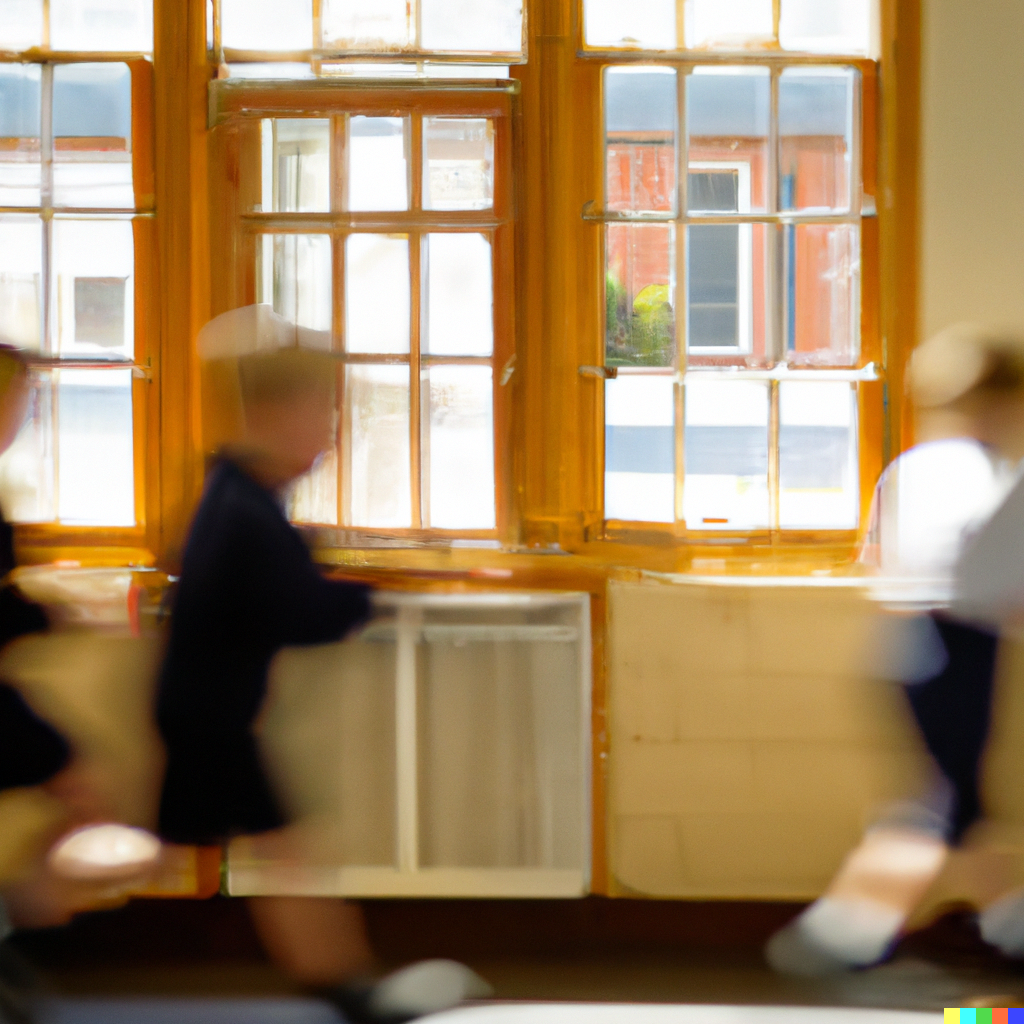No. 4: Replace those windows!
No. 4: Replace those windows!
Number 4
High-efficiency ceiling fans can reduce energy consumption, improve indoor air quality, lower maintenance costs, and offer potential energy efficiency rebates and incentives for schools. These benefits can save money and create a healthier learning environment.
Learn why you should do this:
Old windows in schools can be a major source of energy loss, leading to increased energy consumption and higher utility bills. Additionally, old windows may not be as safe or secure as modern windows, potentially putting students and staff at risk. By replacing old windows with new, energy-efficient windows, schools can experience both environmental and financial benefits.
Environmental Benefits:
The primary environmental benefit of replacing old windows in schools is the reduction in energy consumption. According to the Department of Energy, windows account for up to 25% of a building’s heating and cooling costs. Old windows with single-pane glass and poorly insulated frames can allow air to leak in and out, leading to increased energy usage and higher utility bills. New, energy-efficient windows, on the other hand, are designed to reduce air leakage and improve insulation, reducing the amount of energy needed to heat or cool a building. This can help to reduce the carbon footprint of the school and save money on energy bills.
Another environmental benefit of new windows is their ability to improve indoor air quality. Old windows may not be as effective at keeping out pollutants, such as dust and pollen, leading to poor indoor air quality. New windows with improved sealing can help to keep out these pollutants, creating a healthier and more comfortable learning environment for students and staff.
Financial Benefits:
In addition to the environmental benefits, replacing old windows can also provide financial benefits to schools. The primary financial benefit is the reduction in energy costs. According to a report by the Department of Energy, replacing old windows with energy-efficient windows can save up to 15% on energy bills. This can add up to significant savings over time, potentially paying for the cost of the new windows within a few years.
Another financial benefit of new windows is their potential to improve the value of the school. New windows can improve the appearance of the building and provide added security, potentially increasing the value of the property. This can be especially beneficial for schools looking to sell or lease their facilities.
Finally, replacing old windows may also qualify schools for energy efficiency rebates and incentives. Many states and local utilities offer programs to incentivize energy-efficient upgrades, including window replacements. These programs can help schools offset the initial cost of installation, making the upgrade more affordable.
In conclusion, replacing old windows in schools can provide significant environmental and financial benefits. By reducing energy consumption and improving indoor air quality, schools can save money on energy bills and create a healthier learning environment for students and staff. Additionally, the potential for increased property value and access to energy efficiency rebates and incentives make window replacements an attractive option for schools looking to reduce their environmental impact and save money.
Sources:
-
U.S. Department of Energy. “Windows.” https://www.energy.gov/energysaver/windows
-
U.S. Department of Energy. “Energy-Efficient Windows.” https://www.energy.gov/energysaver/energy-efficient-windows
-
Green Building Alliance. “Indoor Air Quality in Schools.” https://www.go-gba.org/resources/indoor-air-quality-in-schools/
-
U.S. Department of Energy. “State and Local Energy Efficiency Programs.” https://www.energy.gov/eere/slsc/state-and-local-energy-efficiency-programs

More ways to make a difference, now!
No. 98: Allow only reusable dishware at school
Number 98 Using reusable dishware at schools has many benefits, including reducing waste, lowering costs, and promoting sustainability education. Research shows that switching to reusable dishware can have a significant positive impact on the environment and finances...
No. 74: Set up beehives in the school grounds
Number 74 Setting up beehives on school grounds can have numerous benefits, including environmental, educational, and financial advantages. The presence of bees can help to support local ecosystems, provide opportunities for student learning, and even generate revenue...
No. 50: Use food waste digesters for fertilizer
Number 50 Food waste digesters are an effective solution to reduce food waste and produce high-quality fertilizer for schools. This sustainable system not only benefits the environment by reducing greenhouse gas emissions, but it also saves schools money on waste...
Neil is the Executive Director at the Carbon Neutral School Foundation and is one of the world’s leading experts on efficiently decarbonization school operations.
He has extensive knowledge and experience in working with schools across the globe on sustainability opportunities and challenges, helping them to understand the power of putting a 21st century approach to seeing mission, vision, operational efficiency and sustainability at the heart educational their establishment.





